 |  |
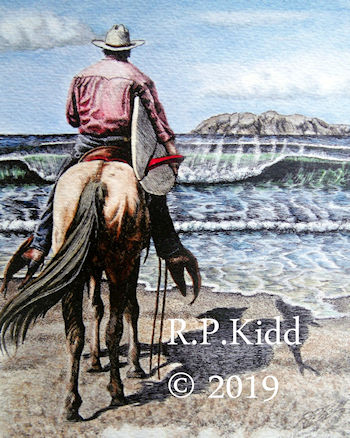
When a Storyteller meets her match, she will gracefully step back and become a passenger as the master of this story weaves a lifetime of his adventures around the world. It would take a hefty book to record all Robert Pace Kidd’s experiences as an iconic artist, cowboy, and long board surfer. His life and travels have made him a worldly philosopher speaking four languages. Some might see him as an adventurer, maybe a tiny bit lawless, who lives just outside convention. All would be true. One thing for sure, Robert shows us one way to live an inspired life.
I met with Robert in his home in one of the oldest campos that still remains on the Baja coast. He has lived there for fifty years in a place that still has a feel of simpler times. His greeting was warm as he invited me in. We jumped right into the highlights of a very long life. I’d heard about one of his many surfing adventures. Robert was already a surfer and an artist at 25 in the late 60s. “I had a choice to enlist or be drafted into the Vietnam conflict. I joined the United States Navy and was made an Underwater Mineman E-5 and was sent to the Philippines, Subic Bay on the China Sea. I built, maintained and deployed sophisticated electrical underwater explosive devices.” He growls, “Fortunately I was deployed only a handful of times offshore into Vietnam waters.”
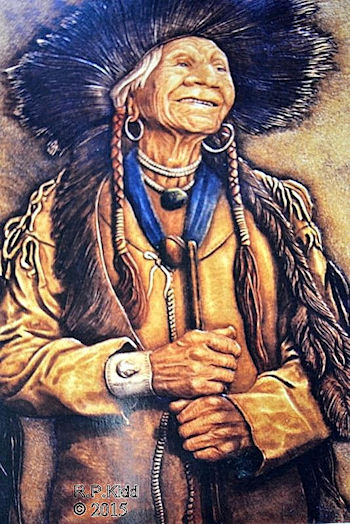
Even then Robert’s fun-loving nature was evident. He didn’t leave his surfboard behind. He spun his tales through the backdrop of war. “On my days off I would jump aboard an old bush-bus that looked like what you see in the movie, Romancing the Stone. I would go out to a communication station and there was a little island with a small break and 78-degree water.” He exclaimed, “No one had ever seen a surf board there! Later I found a '51 Chevy and tore the backseat out to shove my long board in.” He explained with a certain amount of glee, “I would drive all over the Philippines looking for waves!” A photographer friend traveling with him took the photos of him surfing. And as seems to happen for Robert, his experiences take him to the next level. “One of the pictures is in the Surfing Hall of Fame in Daet, Philippines now. It is considered to be a legacy in the surfing museum as it is the first picture ever taken of someone surfing there.”
The tall lanky surfer went into the kitchen and brought back a plate of fresh watermelon. His story meandered through other surfing expeditions and turned toward Robert’s unique leather art. Robert mused, “My father was a master of hand tooling leather and created beautiful handbags and intricate belts for my mother.” He proudly shared one of his cherished keepsakes, a tooled leather journal-cover affectionately well-worn. He has taken what he learned from his father’s mastered craft to his own unique art form. He carves the fine detail into the leather creating an almost living and breathing person. With a color wash he invented, the leather holds lifelike realism of proud indigenous elders and a few famous people like John Wayne. Robert thrives on challenging subjects. The last two indigenous works which he completed in leather are both in the collection of one of his clients in Lake Como, Italy. It is said in the art world, “He stands alone as a portrait artist working in leather.”
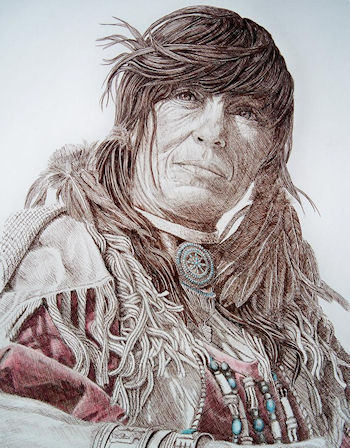
Most recently Robert is working in ink and watercolor medium. Many are framed in antique car parts. One of his favorite sayings is, “Rust never sleeps.” His ink and watercolor paintings cause you to lean into the picture; fascinated with the unbelievable details. Robert’s art catches the very essence of people; their joy and their weariness. The landscapes and characters are rich memories of a simple life. But often you will find he allows his humor to be included into his work. The artist-eye sees everything. An artist notices light, colors, form, textures. An artist catches in a glance the potential of what has not yet been created. Robert is a master.
I had to ask, “So how did the name Long Board Cowboy come to be? Robert leans back to think, “I use to go up into the mountains and do mountain man gigs. There was an old mountain man, Gary McClintock, who was like a page out of a history book. Gary was a saddle maker and he created the “Vaquero Days” in Descanso, California. We became instant friends. Nearly 2000 people would drive up to sell their wares. There would be roping events with a different purpose. The contest was to see who could lay the animal down most gently in order to doctor it. It’s not easy and a cowboy had to be really good.” This old gent invited Robert to include his art at the events.
One of the people who showed up was Dale Velzy. He was part of surfing history as one of the first surfboard shapers in California and the U.S. One evening there was a festive party in a little place that looked like an 1800s saloon filled with dusty cowboys. “We were all sitting around talking about surfing.” As it turned out both Dale and Robert had surfed Huntington Beach though decades apart. It was so surprisingly incongruent that all the cowboys there had surfed. Suddenly, Robert exclaimed, “Whoa! We must be the Long Board Cowboys!” Now it has become his famed logo.
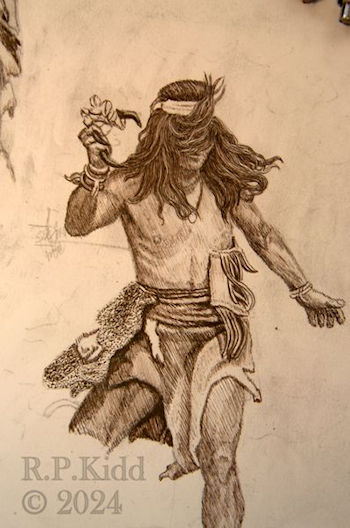
Robert’s lifestyle and his enthusiastic engagement with people have opened the door to meeting many different kinds of people from around the world. All his friends have something in common; they have big visions. They have a passion for what they are doing and are committed to living beyond the norm. Like Robert his friends have a curiosity which often leads to being in service to a higher calling. A friend of a friend introduced him to Joanne Tawfilis, a Native American, who started the Art Miles Murals Project. Joanne traveled the world bringing together indigenous women, children to paint together. She supplied the materials and everyone painted as they wanted. When Robert met her, she had nearly eight miles of murals of 5ft by 12ft canvases.
It so happened she was on her way to Mexico City to the famous pyramids of Teotihuacan and invited Robert. This event hosted 1500 children with 300 volunteer to help. “From the larger group I was given a group of homeless kids who Joanne had brought in off the streets. In total that day 80 murals were completed!” After this event the pyramids were closed for the full moon equinox. Equinox is a time period when day and night are equal in length. It is little known in the Western world but the ancient civilization believed this to be a truly auspicious time and so they close the pyramids to tourism. Only Indigenous pilgrims are invited to attend and participate in the ancient ceremonies. It was a true honor for Robert to be invited. “I was blown away. It was a huge deal. I tell you my feet never touched the ground.” Robert met with an elder who gave him a very piercing look of assessment saying, “It is good you are here.” Robert continued, “The music, the drum beat and the conch shell’s windy sounds created amazing rhythms, and the Yaqui dancers were extremely powerful. I was so grateful to witness all the steps leading to the top of the pyramid literally covered with singing humanity.” Several of his latest ink and watercolor paintings captured this event since no cell phones were allowed. “I was in an altered state for most of my time there.” Since there were no drugs or alcohol allowed, this is what has been called a spiritual high, or an energy that comes naturally with expanding consciousness.
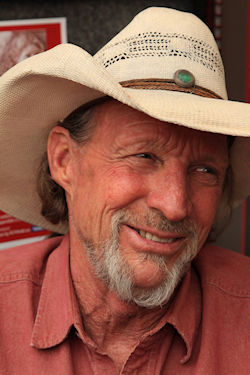
They say a picture is worth a thousand words and this certainly applies to Robert’s work. He laughs, “My art got around a lot in these last fifty plus years.” It is an impressive amount of work which is found in collectors’ homes around the world and most of the southwest states. Robert put on a two man show with friend Gary Grotey that was held at Grand Central Station in Chicago. Robert grins and says, “Not too shabby for two surfer boys from Encinitas.” With a hint of modesty he continues, “I have definitely been wined & dined with some high rollers. But this is the entree art gives you. I once had the president of the New York stock exchange tell me that someday he would want to live like me.” Robert is a modern-day sage when he speaks about life, “You can study all you want, but it is finally the heart. The heart is the universal connector."

Fair price. Webpage could be improved.

Easy buying website understands all I need

Was planning to go to Mexico, but unfortunately my bike broke down. Got very friendly and fast...